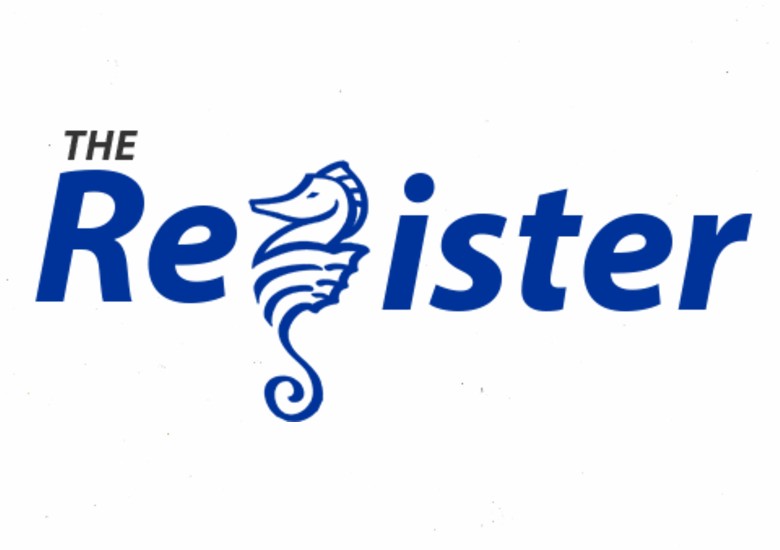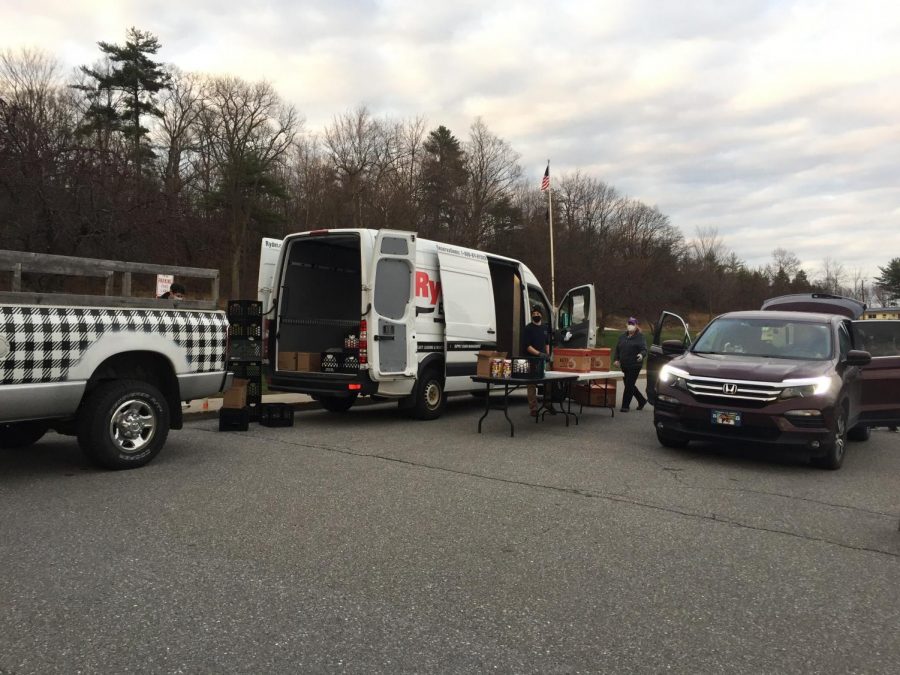Combatting Food Insecurity During the Pandemic
November 24, 2020
Due to the sensitive nature of this topic, student names have been changed unless otherwise noted.
A lone, frosty white cargo van sits at the top of the Burlington High School (BHS) faculty parking lot. Inside the van, nondescript cardboard boxes are stacked to the roof and family cars flit in and out of the lot, stopping briefly at the white van to take a box.
The boxes, also referred to as kits, are part of a larger meal distribution system developed to address inadequate food access during the Covid-19 pandemic. This system was created by the Burlington School Food Project (BSFP), by the Burlington School District’s (BSD) school lunch program. Through the boxes, BSFP was able to serve students and families breakfast, lunch, and dinner while schools were closed.
“The pandemic has changed the scope of what we are doing but it has not changed the mission of what we do, which is making sure that all of our students have access to healthy meals everyday,” Doug Davis, the Director of Food Services at BSFP, said. “Because if we are not providing [students] with those meals, they are not able to learn.”
BSFP currently runs meal kit pickups two days a week at various locations in Burlington with home delivery and dietary accommodations available as well. Approximately 450 meal kits are prepared each week, equating to 200 boxes each pickup day. Meal kits are locally sourced and contain a week’s worth of items similar to those found in school lunches.
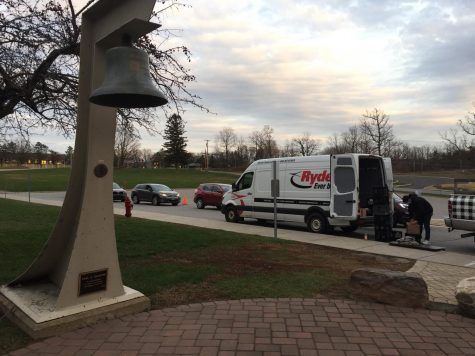
“We want to make sure that kids have access to their food,” Davis said. “It’s really humiliating to be hungry. It’s really sad for parents to be weighing and balancing how to feed themselves and each other. This is something that people should not be worried about right now. We have enough to be worried about. We really need to do our best to take that worry off the table.”
I spoke to Sandra, who preferred that the Register only use her first name, outside of her navy sedan after she picked up her weekly meal box. Her son attends Integrated Arts Academy (IAA) and she comes to the BHS pick-up location every Friday.
“I’m very happy when I remember that on Friday, I have to go and get a meal kit,” she said. “That puts a smile on my face that there’s actually a program that is helping me, supporting me in a certain way.”
Sandra sends her son to after school child care while she works. Childcare had been difficult for her to find because of the pandemic and the expenses were greater.
“I barely have anything to fall back on but I’m happy the meal kit likes to subsidize the amounts I could have spent buying food,” she said. “I can now channel that money to getting him a good daycare and paying my rent and paying my utility bills.”
A BHS sophomore, who we will refer to as Ron, preferred to have his name omitted for the privacy of his family. He is no longer experiencing severe food insecurity. In middle school, Ron and his siblings relied on the meals at school and their trips to the food shelf for sustenance. He describes their socioeconomic status as “brittle class” or barely living over the poverty line during those years. At the time, his family of six did not qualify for any federal aid.
“It’s almost weird,” he said. “You would think that you would just complain or you would feel very angry at your parents. I assumed that if something like this happened, that I would get angry at someone just because that’s what happens normally. I didn’t feel any anger. I didn’t feel sad. There weren’t many emotions. I just felt hungry.”
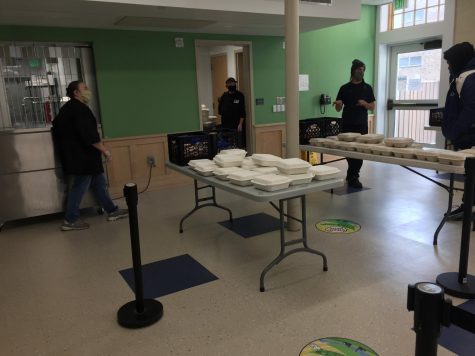
Hunger Free Vermont reports that 17,726 or about 15% of Vermont children under the age of 18 live in food-insecure households. Food insecurity is the lack of consistent access to food. That percentage increased to 17.6% from April 23, according to a Northwestern study using data from the US Census Household Pulse survey.
“Given last year’s figures, roughly 50% of our students would have been eligible for meals from a financial metric,” Davis said. “…But now, given the increase in unemployment, given the number who are underemployed meaning their hours have changed, or given the fact that folks have to stay home to care for children because child care centers are either closed or can’t get to the same capacity, I would say the number is higher than it was last year.”
The October state unemployment rate was larger than the pre-pandemic rate at 3.2%. Federal unemployment benefits have also expired. To reduce strain on families during the pandemic, BFSP does not charge for meals or meal boxes. BFSP receives reimbursement from the federal government for the meals they provide and can obtain equipment through grants.
“In normal times, we would not normally be serving families from Colchester and Winooski,” Heather Torrey, Assistant Director of BSFP and dietician, said. “But because we have capacity and reach, we’re able to help so many more families.
Sarah Heusner, the Food Education and Youth Outreach Manager at BSFP, reiterated that the additional government funding helped BSFP. The funding offsets the costs of hunger relief, which previously came directly from their budget. She managed meal boxes during school breaks in previous years but recently saw increasingly unmanageable numbers.
“You can’t teach hungry bodies,” Heusner said. “It gets really hard to teach kids that are hungry and it’s really hard for them to use their brains appropriately. We need to make sure that, even beyond the pandemic, we all are really aware of that and aware that [providing meals] is a crucial piece of our education system.”
On November 6, I spoke with Heusner who described a delivery she made earlier that day to a recently homeless family who is now residing in a shelter.
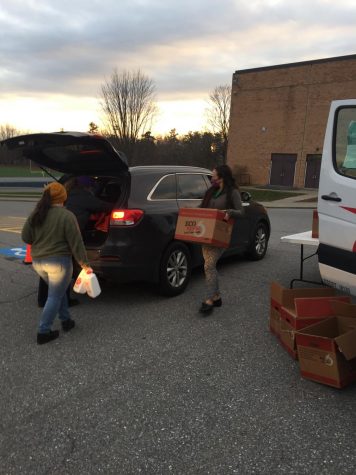
“We have quite a few students who are living in hotels and not living in places that are like homes and have proper kitchens and stuff like that,” she said. “I don’t think we realize that that’s such a big issue for us. So they’re having stress on top of pandemic stress.”
Ron occasionally collects a meal kit when finances are tight, usually the week when his family’s household bills are due. His family recently went through changes in financial circumstances and are now eligible for federal aid.
“One of the biggest problems with the food shelf was that you can only take a certain amount for your family and you could only go twice a month,” Ron said. “We have a big family and of course most of them are younger, they just eat and eat and eat because they’re growing. By the end of the month, we would have nothing left. Maybe a couple slices of bread, a quarter jar of peanut butter left. Then we would wait until the start of the next month and go to the food shelf.”
A BHS junior, who will be referred to as Kim, also requested that her name not be used to maintain her family’s privacy. She no longer describes her food insecurity as severe. Kim’s family uses food stamps but sometimes they do not cover all of her family’s food needs so the food shelf becomes a main source of food. When that happens, Kim is more dependent on school meals.
“There was one time where one of my siblings wasn’t going to school as much because of things going on, stuff that was happening in their lives, they couldn’t go to school,” she said. “We didn’t have enough money to feed them at home so me and my sister had to stay after school for the dinners. We also had to take stuff home in our bags because we didn’t want to make it obvious that we were taking a bunch of milks home from the fridge in the back. So we would go back there and put them in our bags. We would also save some breakfast so they could eat.”
Kim, like other students who experience food insecurity, is uncomfortable about sharing her struggles with food access. Both Kim and Ron are no longer in cases of severe food insecurity as they were before, making it easier to talk about it, albeit anonymously.
“I don’t want to tell people that we might not be able to afford certain foods or we don’t have enough money for certain things,” Kim said. “It’s not something I would feel comfortable talking to my peers about.”
The pandemic amplified the challenges BSFP regularly faces such as delivery vehicles, prep locations, and the increasing numbers.
“The entire school district and the city are stretched thin when it comes to staffing,” Heusner said. “That’s a really big problem. That’s the hurdle we have, is getting people to work this stuff.”
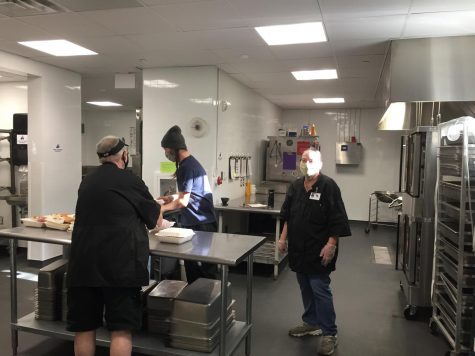
Safety was a major concern when it came to staffing. Davis raised the questions on the safety of his staff, kitchen compliance to pandemic food safety standards, and the safest way to serve meals. Normally, volunteerism is a solution, but not during the pandemic.
“We’re having a hard time taking volunteers. There are people that want to help, but because of the pandemic, it’s tricky to take on volunteers that haven’t been vetted as school districts employees. So we can’t really take on volunteers as we have in the past,” Heusner said.
Another challenge presented was access to meal kits and pick-up locations.
“One potential reason why we’re not reaching as many folks is that the boxes are pretty big,” Torrey said. “So it’s definitely easier if you have a car and can drive to these locations.”
A barrier to accessing food services for both Ron and Kim was transportation. Ron walked to the food shelf to pick up meal boxes. Kim’s family initially had a van but it was unreliable so they sold it.
“We had friends who donated a bunch of their old food,” Kim said. “A lot of it was past its due date, actually. But they gave us a lot of food since we couldn’t go to pantries easily without riding the busses.”
Transportation is an issue heightened by the pandemic, factoring into poor grocery store access and food insecurity in the community.
“There are a lot of people in our community that don’t feel comfortable or don’t have transportation and are a little hesitant to get on the bus or the bus has reached capacity and can’t stop,” Davis said.
The week’s worth of meals makes the weight of each box a handicap for those who go to the pick-up locations on foot. One possible solution is increasing delivery to accommodate work schedules, transportation needs, and childcare. The federal government extended its aid until the end of June, allowing BFSP to maintain the meal kit system. As Vermont transitions into winter, the need for pick-up locations and access to the meal kits will likely increase.
“If people are already having problems now financially, add to it the expenses that are added in Vermont,” Davis said. “It’s cold. The heat, the transportation, fresh food, fresh produce, all of those things go up in price. The changes in the consistency of public transportation during bad weather. All of those things.”
As the pandemic worsens and winter sets in, Torrey wants to remind students and families that they have access to meal kits.
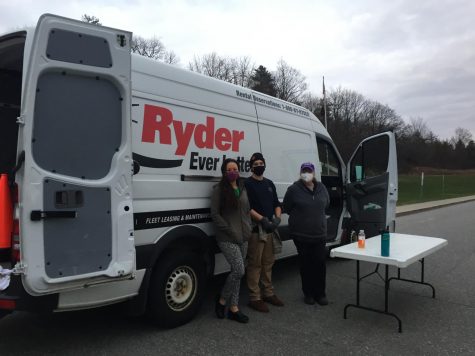
“I try to remind folks that it’s not just about folks who need it,” she said. “This is a meal kit with enough food for a week. Save yourself a trip to the grocery store, an unnecessary reason to go out during a pandemic. What we’re doing, we’re hoping is a valuable service to all community members in Burlington.”
“I’ve had many families come and say ‘I haven’t been coming because I don’t want to take a box from another family,” Davis said. “That is not the case. Any family can participate and we encourage families to come and participate. I want to make sure that everybody is getting the meals that they need to feed their families. Especially at a time like this, that is so crazy.”
Overall, BSFP wants to ensure that students and families know that they are still a resource and available to everyone.
“I would love students and families to know that this service exists and it is available to everybody,” Davis said. “You don’t need to fill out any forms, you don’t need to show an ID, you don’t need to have your children in the car to pick the meals up. If you have a neighbor that can’t go get the meals, you are welcome to pick them up on their behalf.”
To see meal box contents and other Burlington School Food Project updates, check out their Facebook page. Contact Sarah Heusner for deliveries, [email protected]. Meal kit pickup is on Wednesdays and Fridays at the Burlington Boys and Girls Club, the Sustainability Academy, Burlington High School, and Champlain.

